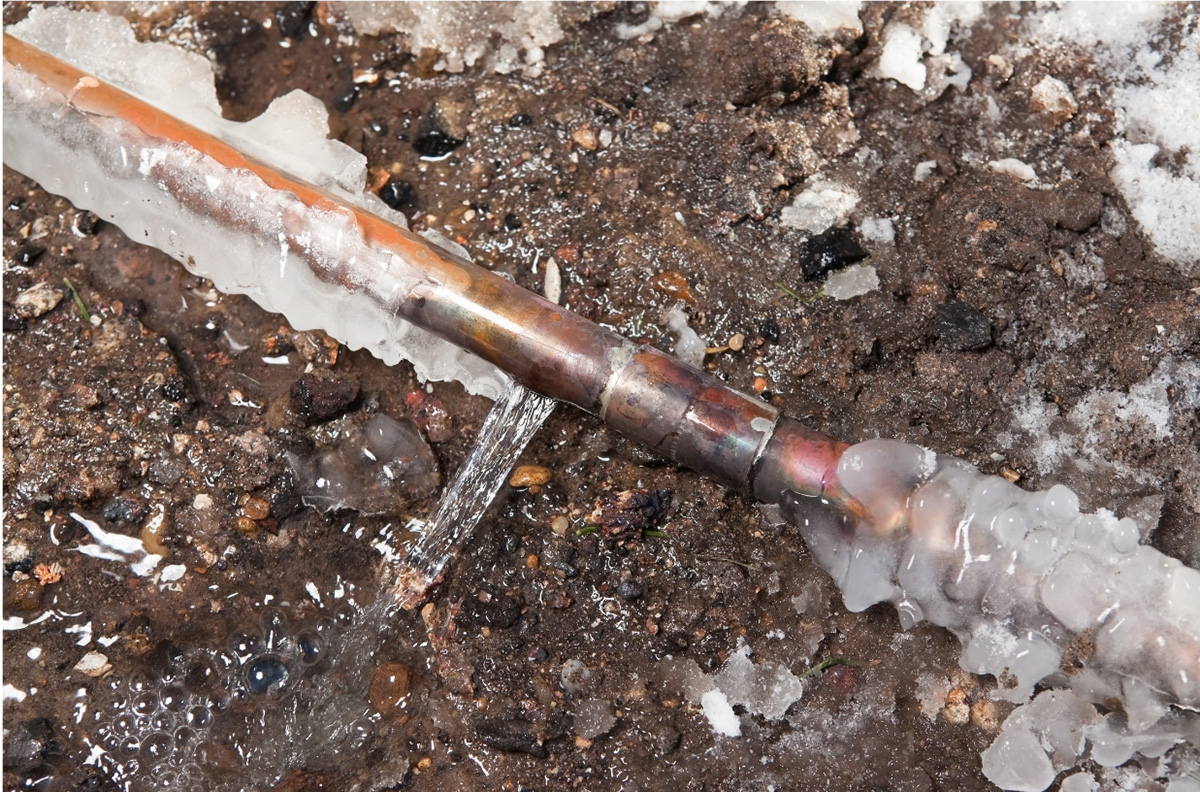Tips to Avoid Frozen Pipes in Cold Weather: Professional Tips
Tips to Avoid Frozen Pipes in Cold Weather: Professional Tips
Blog Article
Nearly everybody maintains their unique thinking with regards to Winter Plumbing Precautions: Preventing Frozen Pipes.

Cold weather can damage your plumbing, especially by freezing pipelines. Right here's just how to stop it from taking place and what to do if it does.
Intro
As temperatures drop, the threat of icy pipes boosts, possibly causing costly repairs and water damages. Understanding just how to prevent icy pipes is important for property owners in chilly environments.
Understanding Frozen Pipes
What triggers pipes to ice up?
Pipes freeze when subjected to temperatures listed below 32 ° F (0 ° C) for extended durations. As water inside the pipes freezes, it broadens, putting pressure on the pipeline wall surfaces and possibly triggering them to break.
Threats and damages
Frozen pipes can bring about water system disturbances, residential or commercial property damages, and pricey fixings. Ruptured pipelines can flood homes and trigger substantial structural damage.
Indications of Frozen Water Lines
Recognizing frozen pipes early can stop them from bursting.
Just how to identify frozen pipelines
Seek reduced water circulation from taps, unusual odors or noises from pipes, and noticeable frost on revealed pipelines.
Avoidance Tips
Insulating susceptible pipes
Wrap pipes in insulation sleeves or utilize warmth tape to shield them from freezing temperature levels. Focus on pipes in unheated or outside locations of the home.
Home heating methods
Keep indoor areas appropriately warmed, especially locations with pipes. Open closet doors to enable cozy air to flow around pipelines under sinks.
Safeguarding Outside Plumbing
Garden tubes and exterior faucets
Separate and drain yard hose pipes before winter. Mount frost-proof faucets or cover exterior taps with shielded caps.
What to Do If Your Pipelines Freeze
Immediate actions to take
If you think frozen pipelines, maintain taps open to soothe stress as the ice thaws. Make use of a hairdryer or towels soaked in warm water to thaw pipelines slowly.
Long-Term Solutions
Architectural adjustments
Consider rerouting pipelines away from outside walls or unheated areas. Add added insulation to attic rooms, cellars, and crawl spaces.
Updating insulation
Buy high-quality insulation for pipelines, attic rooms, and wall surfaces. Correct insulation helps maintain constant temperature levels and decreases the danger of frozen pipes.
Final thought
Protecting against icy pipelines requires positive steps and fast feedbacks. By recognizing the reasons, indications, and safety nets, house owners can secure their plumbing during cold weather.
6 Proven Ways to Prevent Frozen Pipes and Protect Your Home
Disconnect and Drain Garden Hoses
Before winter arrives, start by disconnecting your garden hoses and draining any remaining water. Close the shut-off valves that supply outdoor hose bibs and leave the outdoor faucet open to allow any residual water to drain. For extra protection, consider using faucet covers throughout the colder months. It’s also important to drain water from any sprinkler supply lines following the manufacturer’s directions.
Insulate Exposed Pipes
Insulating your pipes is an effective way to prevent freezing. Pipe insulation is readily available at home improvement stores and is relatively inexpensive. Pay close attention to pipes in unheated areas such as the attic, basement, crawl spaces, or garage. Apply foam insulation generously to create a buffer against the cold. You can also wrap your pipes in heat tape or thermostat-controlled heat cables for added warmth.
Seal Air Leaks
Inspect your home for any cracks or openings that could let in cold air. Seal any holes around the piping in interior or exterior walls, as well as the sill plates where your home rests on its foundation. Additionally, make sure to keep your garage door closed unless you’re entering or exiting. Leaving it open creates a significant air leak that can lead to frozen pipes.
Allow Warm Air Circulation
During cold snaps, it’s essential to allow warm air to circulate evenly throughout your home. Leave interior doors ajar to promote better airflow. Open kitchen and bathroom cabinets to help distribute heat consistently around the rooms. If you have small children or pets, be sure to remove any household chemicals or potentially harmful cleaners from open cabinets for safety.
Let Faucets Drip
A small trickle of water can make a big difference in preventing ice formation inside your pipes. When temperatures drop significantly, start a drip of water from all faucets served by exposed pipes. This continuous flow helps prevent the water from freezing. Additionally, running a few faucets slightly can relieve pressure inside the pipes, reducing the chances of a rupture if the water inside does freeze.
https://choateshvac.com/6-proven-ways-to-prevent-frozen-pipes-and-protect-your-home/

I am very interested by Helpful Tips to Prevent Frozen Pipes this Winter and I hope you enjoyed reading our post. Do you know about anybody else who is excited about the subject? Be sure share it. Thanks a lot for taking the time to read it.
Book 24/7 Report this page